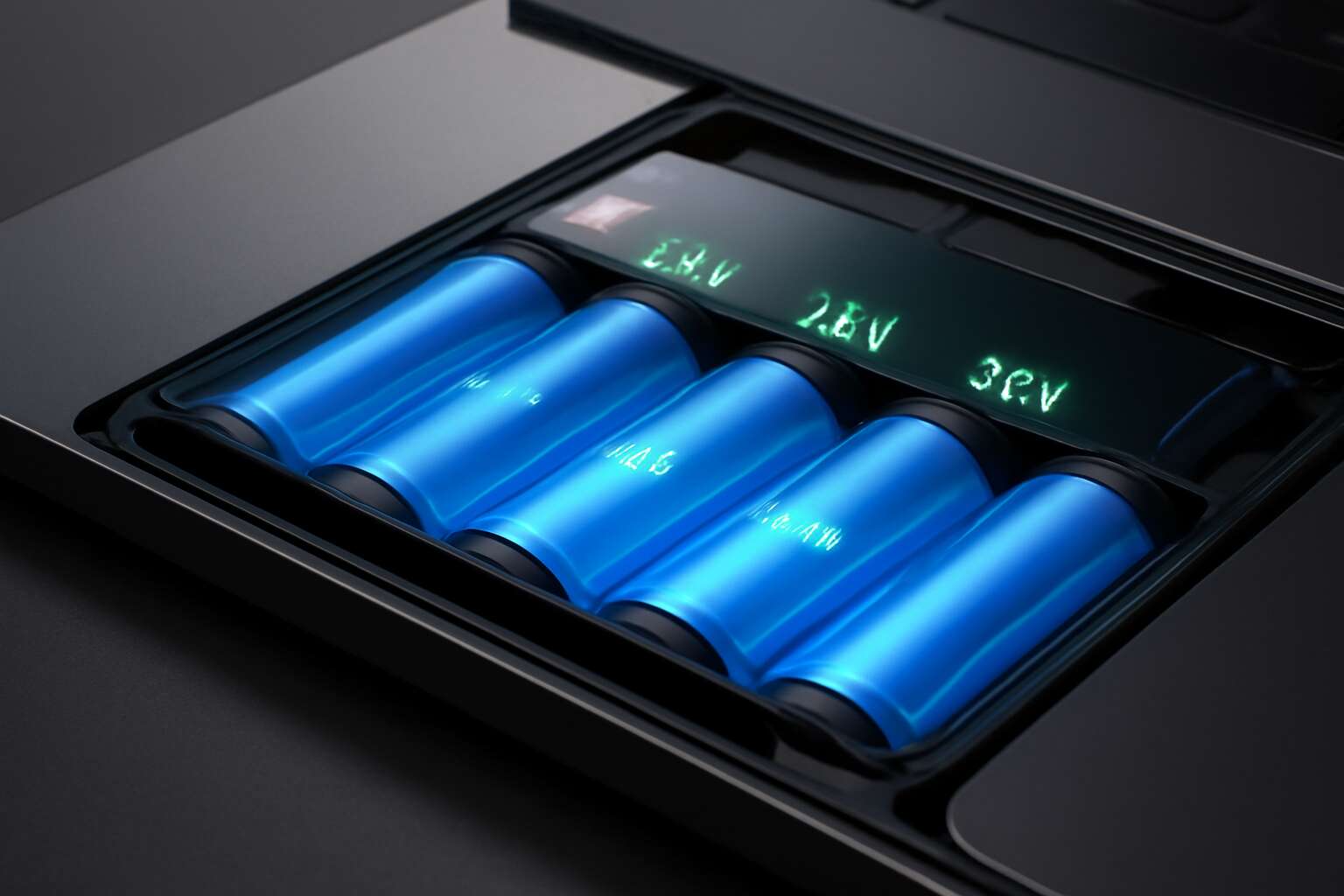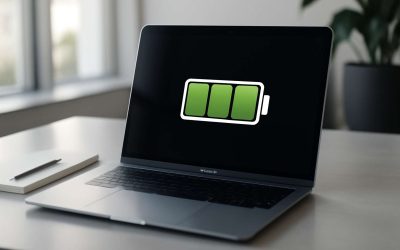Understanding Laptop Battery Cells
What Are Battery Cells and How Do They Work?
At the heart of every laptop lies a complex yet fascinating energy system—its battery cells. These small yet mighty units are the fundamental building blocks that store and supply power, enabling the portable nature we often take for granted. Understanding how these battery cells work is crucial, especially when considering laptop battery voltage per cell, which directly impacts overall performance and longevity.
Each battery cell functions through a delicate balance of chemical reactions, converting stored energy into electrical energy that powers your device. The voltage per cell—typically around 3.6 to 3.7 volts for lithium-ion batteries—is a critical indicator of health and efficiency. When cells operate within their optimal voltage range, they deliver consistent power, ensuring your laptop runs smoothly without unexpected shutdowns.
For those keen to delve deeper, here’s a quick overview of what influences the laptop battery voltage per cell:
- The chemical composition within each cell
- State of charge and discharge cycles
- Temperature and environmental conditions
By appreciating the inner workings of battery cells, users can better grasp why maintaining the right voltage per cell is vital for optimal laptop performance and battery lifespan—especially important in regions like South Africa, where power stability can be unpredictable. Truly, the science of battery cells is as much about chemistry as it is about understanding the subtle dance of energy and endurance in our daily lives.
Types of Battery Cells Used in Laptops
Within the realm of laptop batteries, the type of battery cell used plays a pivotal role in determining overall performance and longevity. Different cell chemistries impact the laptop battery voltage per cell, influencing how efficiently the device operates and how long the battery lasts on a single charge.
For example, lithium-ion (Li-ion) cells dominate the market, offering a sweet spot between energy density and safety. These cells typically operate around 3.6 to 3.7 volts, providing a stable and reliable power source. On the other hand, lithium-polymer (LiPo) cells, known for their flexibility and lightweight design, often share similar voltage characteristics but can be engineered to suit specific device requirements.
Understanding the nuances of these battery cells is crucial, especially when considering factors like temperature fluctuations and cycling. The key to unlocking optimal performance lies in recognizing how the design and chemistry of each cell influence the laptop battery voltage per cell, ultimately shaping the user experience in regions with unstable power grids like South Africa.
Common Configurations of Laptop Battery Cells
Within the intricate dance of energy stored and released, understanding the common configurations of laptop battery cells reveals a symphony of precision. Each cell, a tiny powerhouse, is arranged in patterns that dictate the overall voltage and performance. These configurations—whether in series, parallel, or a harmonious blend of both—craft the unique signature of a laptop’s battery life and efficiency.
The most prevalent setup involves cells connected in series, where each adds to the total voltage. For example, a typical arrangement of six lithium-ion cells in series results in a total voltage of around 22 volts, with each cell maintaining a voltage of approximately 3.6 to 3.7 volts. This configuration ensures a stable power supply while balancing safety and energy density.
Understanding the nuances of these common configurations illuminates how manufacturers optimize for longevity and performance, especially in regions like South Africa where fluctuating power grids demand resilient and reliable power sources. The design of each cell and its arrangement directly influences the critical aspect of laptop battery voltage per cell, shaping your device’s endurance and responsiveness in ways both subtle and profound.
Standard Voltage Levels per Cell in Laptop Batteries
Typical Voltage Range for Lithium-Ion Battery Cells
Behind every reliable laptop lies a delicate dance of chemistry and engineering, especially when it comes to the voltage of each cell. The standard voltage levels per cell in a lithium-ion battery typically hover around 3.6 to 3.7 volts, creating a sweet spot that balances power and longevity. This range ensures that the battery delivers consistent energy without risking damage or undue wear.
When the voltage per cell drops below 3.0 volts, the battery enters a perilous zone, risking irreversible damage, while exceeding 4.2 volts can lead to overheating or even safety hazards. To visualize this, consider the following typical voltage range for lithium-ion battery cells used in laptops:
- Minimum safe voltage: 3.0 volts
- Nominal voltage: 3.6 to 3.7 volts
- Maximum safe voltage: 4.2 volts
Understanding the laptop battery voltage per cell is crucial for assessing battery health and performance. It’s a fine balance—too low, and the battery risks failure; too high, and safety becomes a concern. This delicate equilibrium ensures that your device remains reliable through countless hours of daily use, especially in environments where power stability isn’t always guaranteed, much like rural South Africa where every charge counts.
Voltage Per Cell in Different Battery Chemistries
In the shadowed corridors of modern technology, the voltage per cell in a laptop battery whispers secrets about its vitality. While lithium-ion remains the reigning monarch, other chemistries—like nickel-metal hydride and lithium-polymer—each have their own spectral signatures in terms of voltage levels. These values are not arbitrary; they are carefully calibrated to maximize performance and safety.
For lithium-ion batteries, the voltage per cell typically hovers around 3.6 to 3.7 volts during normal operation—this is the sweet spot that balances power with longevity. Lithium-polymer variants often mirror this range, yet some specialized cells may operate at slightly lower or higher voltages depending on their design. Nickel-based chemistries, such as NiMH, tend to have a nominal voltage of 1.2 volts per cell, which influences their use in different contexts.
- Understanding these voltage ranges is vital for maintaining the health of your laptop battery.
- Each chemistry’s unique voltage per cell determines how long your device can sustain its spectral glow before needing a charge.
In the depths of battery chemistry, the voltage per cell acts as a silent guardian—an indicator of the delicate balance between energy storage and safety. Whether in the flickering gloom of a dim-lit room or the relentless daylight of a South African summer, knowing these voltage thresholds ensures your device remains a steadfast companion, guarding its secrets in the dark.
Impact of Cell Voltage on Battery Performance
Within the intricate tapestry of modern portable power, the standard voltage levels per cell in a laptop battery serve as a subtle but vital indicator of overall health and performance. While the typical voltage per cell for lithium-ion batteries hovers around 3.6 to 3.7 volts, this seemingly modest range masks a profound influence on the device’s efficiency and lifespan. Variations outside this window can signal underlying issues—either diminished capacity or impending failure—making the understanding of these voltage thresholds crucial for any user or technician.
The impact of cell voltage on laptop battery performance is significant. When the voltage per cell drops below the optimal range, the battery’s ability to deliver consistent power wanes, leading to shorter usage times and potential erratic behavior. Conversely, overcharging to higher voltages risks thermal runaway and safety hazards. Monitoring these voltage levels with precision tools ensures the delicate balance between energy storage and operational safety remains intact, especially in environments where temperature fluctuations are common, such as South Africa’s diverse climate zones.
Factors Influencing Laptop Battery Cell Voltage
State of Charge and Voltage
Battery cell voltage isn’t just a number; it’s a reflection of the health and longevity of a laptop battery. Several factors influence the laptop battery voltage per cell, including the state of charge (SoC) and temperature. When a battery charges or discharges, the voltage per cell fluctuates within a specific range, typically between 3.0V and 4.2V for lithium-ion cells. These changes are natural, but they can be affected by external conditions, such as temperature extremes or aging. High temperatures accelerate chemical degradation, which can cause the laptop battery voltage per cell to drift outside optimal ranges, impairing performance and safety. Conversely, cold environments slow chemical reactions, leading to artificially low voltage readings that don’t accurately reflect the battery’s capacity. Understanding these influences helps in preserving battery life and ensuring safe operation.
Temperature Effects on Cell Voltage
Temperature exerts a profound influence on the laptop battery voltage per cell, often dictating how well your battery performs in different environments. When a laptop is exposed to high temperatures, chemical reactions within the battery accelerate, which can cause the voltage per cell to rise beyond optimal levels. This rapid chemical activity can lead to faster degradation, ultimately shortening the battery’s lifespan—a costly reality for many users in South Africa’s scorching summers. Conversely, cold conditions slow down these reactions, resulting in artificially low readings of the laptop battery voltage per cell that don’t truly reflect its capacity or health.
Understanding the impact of temperature on cell voltage is essential for preserving your laptop’s longevity. External factors such as ambient temperature or prolonged exposure to heat can subtly shift the voltage per cell, influencing overall battery performance. Recognizing these influences allows users to better gauge their battery’s health and avoid potential safety hazards. In fact, maintaining an optimal temperature range not only stabilizes the laptop battery voltage per cell but also ensures reliable power delivery and safety during operation.
Age and Wear Impacting Voltage Levels
The passage of time is an insidious force, and nowhere is this more evident than in the subtle decline of your laptop battery voltage per cell. As the years bleed into one another, chemical wear and tear silently gnaw at the heart of each cell, whispering tales of diminishing power. A worn battery is a ghostly remnant of its former self, with voltage levels that betray its age, often plunging below optimal thresholds and exposing weaknesses in your device’s core strength.
Age and wear are the silent assassins of battery vitality. Over countless charge cycles, the delicate balance of chemical reactions becomes disrupted, causing the laptop battery voltage per cell to falter. This decline manifests in shorter runtime and unpredictable performance, reminding us that even the most resilient batteries are mortal.
- Decreased capacity
- Reduced voltage per cell
- Faster degradation
Each of these signs echoes the same dark truth—time’s relentless march leaves its mark, and understanding these changes is essential for those who seek to preserve their device’s longevity in a world where power is life itself.
Measuring and Monitoring Laptop Battery Voltage
Tools and Techniques to Check Cell Voltage
Monitoring the health of your laptop battery begins with understanding its voltage per cell, an indicator of overall performance and longevity. Accurate measurement of laptop battery voltage per cell can reveal subtle signs of deterioration long before noticeable issues arise. Modern tools such as multimeters and specialized battery analyzers offer precise readings, allowing users to delve into the intricate details of each cell’s condition.
Advanced software utilities, coupled with hardware diagnostics, provide a window into the delicate balance of voltage levels across the battery. These techniques enable users to identify uneven voltage distribution, which might signal impending failure or the need for calibration. For those seeking a more hands-on approach, using a multimeter to measure voltage per cell directly is a straightforward yet powerful method. It’s a practice that requires patience and precision, but the insights gained are invaluable for maintaining optimal laptop battery performance.
- Multimeters for direct voltage measurement
- Battery monitoring software for real-time data
- Diagnostic tools integrated into device management systems
By combining these tools and techniques, users can better interpret the subtle language of their battery’s voltage per cell, ensuring their device maintains its vitality well into the future. After all, understanding the delicate dance of voltage levels is essential—each cell holding the promise of power, each reading a whisper of its health.
Interpreting Voltage Readings
Accurately measuring and monitoring the laptop battery voltage per cell unveils the subtle whispers of battery health that often go unnoticed. When you scrutinize voltage levels, you gain insight into each cell’s performance and potential aging signs. A steady voltage indicates a healthy cell, while irregularities can hint at underlying issues well before they manifest as performance drops.
To interpret these readings effectively, it’s crucial to understand what constitutes normal voltage ranges. For lithium-ion cells, a typical voltage per cell hovers between 3.6V and 3.7V during charge, but drops below this threshold as the cell deteriorates. Recognizing these shifts allows users to anticipate battery failures and plan for replacements or recalibration.
Some users opt for simple yet powerful tools like multimeters to measure voltage per cell directly. Others leverage sophisticated battery monitoring software that provides real-time data, making it easier to track subtle changes over time. Combining these approaches offers a comprehensive picture of your device’s power reservoir, ensuring longevity and reliable performance.
Signs of Cell Imbalance or Degradation
Monitoring the laptop battery voltage per cell is akin to giving your battery a health check-up—without the awkward stethoscope. When voltage levels drift outside their normal range, it’s often a sign of impending trouble. A noticeable imbalance, where one cell shows a significantly lower voltage than its peers, signals the early stages of cell degradation. This imbalance can lead to uneven wear, ultimately reducing overall battery capacity and longevity.
Some telltale signs of cell imbalance or degradation include rapid voltage drops during use, inconsistent battery performance, and premature shutdowns. Using tools such as a multimeter or specialized monitoring software can reveal these voltage discrepancies with precision. Here’s a quick overview of what to watch for:
- Significant deviation in voltage levels among cells
- Persistent low voltage readings below 3.6V per cell
- Unexplained drops in battery capacity or runtime
Keeping an eye on the laptop battery voltage per cell isn’t just for tech geeks; it’s a vital step in maintaining optimal device performance and avoiding the frustration of sudden shutdowns. When cells start to misbehave, it’s usually a sign that your battery is aging or suffering from internal damage—an early warning system that saves you from bigger headaches down the road.
Optimizing Battery Life Through Voltage Management
Best Practices for Maintaining Healthy Cell Voltage
Optimizing battery life isn’t just about avoiding the dreaded “battery draining too fast” warning; it’s about mastering the delicate dance of voltage management to keep your laptop battery voltage per cell within healthy limits. When cells stray too far from their optimal voltage range, performance can nosedive faster than a drone in a hurricane. Maintaining the right voltage per cell ensures longevity and reliable performance, turning your portable powerhouse into a trusty sidekick for those marathon work sessions.
One effective approach involves regular monitoring of your battery’s voltage per cell with reliable tools—think of it as giving your battery a health check-up. If you notice voltage levels creeping toward the upper or lower thresholds, it might be time to recalibrate or consider replacing aging cells before they become a liability. Proper voltage management also involves avoiding extreme temperature swings that can skew voltage readings, leading to premature wear or even catastrophic failure. Remember, a well-maintained voltage per cell isn’t just about extending lifespan; it’s about keeping your device running smoothly and efficiently in the long run.
How to Recognize and Address Battery Cell Issues
In the realm of portable technology, a mere whisper of voltage imbalance can spell disaster for your laptop’s endurance. The delicate art of optimizing battery life through voltage management hinges on the vigilant monitoring of your laptop battery voltage per cell. When cells drift too far from their ideal voltage range, performance hiccups become unavoidable—think sluggish responsiveness or unexpected shutdowns. Recognizing these subtle signs early can mean the difference between a reliable, long-lasting battery and a costly premature replacement.
To keep your battery in pristine health, it’s essential to employ trusted tools that accurately measure the laptop battery voltage per cell. Regular checks act like a health inspection, alerting you to potential issues before they escalate. If voltage levels are consistently too high or too low, recalibration or even cell replacement may be warranted. Temperature fluctuations also play a villain’s role—extreme heat or cold can distort voltage readings, accelerating wear and tear. Paying close attention to these factors ensures your device remains a steadfast companion for those demanding work marathons.
Monitoring the nuances of battery cell voltage isn’t just about longevity; it’s about maintaining peak performance. Keep an eye out for signs of imbalance or degradation, such as uneven voltage readings across cells or sudden drops in capacity. By understanding and addressing these issues proactively, you safeguard your investment and ensure every charge counts—because in today’s fast-paced world, a healthy laptop battery voltage per cell is nothing short of a necessity.
Upgrading or Replacing Battery Cells
In the shadowy realm of portable power, ensuring your laptop’s vitality hinges on the silent sentinel known as laptop battery voltage per cell. When these microscopic sentinels drift from their precise calibration, the entire symphony of performance begins to falter. To stave off the creeping darkness of premature failure, upgrading or replacing battery cells becomes an art—an act of reclaiming lost strength in a world that demands relentless endurance.
Advanced battery management systems can often detect when individual cells’ voltage levels fall into the abyss of imbalance. If your laptop’s battery voltage per cell strays beyond the safe threshold, it’s a siren call for intervention. Sometimes, simply recalibrating the battery can restore harmony; other times, a complete overhaul of the cells is inevitable. When considering a replacement, selecting high-quality cells that match the original voltage specifications ensures longevity and stability—because in this gothic dance of electrons, harmony is everything.
For those daring enough to venture into the depths of battery repair, recognize that the key lies in understanding the subtle language of voltage. A carefully orchestrated upgrade can breathe new life into your device, transforming a moribund power source into a robust engine of productivity. Keep a vigilant eye on your battery voltage per cell—each fluctuation whispers secrets about your laptop’s health, guiding you through the labyrinth of maintenance with precision and poise.
Common Questions About Laptop Battery Voltage Per Cell
Can Laptop Batteries Function at Different Voltages?
Many people wonder if a laptop battery can actually function at different voltages, especially when considering battery health or potential upgrades. The truth is, laptop batteries are designed with specific voltage ranges per cell in mind, typically around 3.6 to 3.7 volts for lithium-ion chemistry. While minor fluctuations in voltage per cell are common during charge and discharge cycles, operating outside the recommended range can lead to performance issues or even damage.
It’s important to recognize that each cell in a laptop battery is calibrated to maintain an optimal voltage per cell to ensure efficiency and longevity. When voltage levels stray too far from their normal range, it can signal underlying issues like imbalance or aging. Manufacturers generally specify safe voltage thresholds for their batteries, and exceeding these can result in reduced capacity or potential safety risks.
In summary, while a laptop battery might be able to operate at slightly varied voltages per cell, consistent use outside recommended ranges is not advisable. Understanding the intricacies of voltage per cell helps users better grasp how their battery functions and why maintaining proper voltage levels is essential for optimal performance and safety.
What Is the Safe Voltage Range for Laptop Battery Cells?
Understanding the safe voltage range for laptop battery voltage per cell is essential for anyone invested in prolonging their device’s lifespan. Typically, lithium-ion cells operate within a range of 3.6 to 3.7 volts per cell, which is considered optimal for maintaining battery health. Operating within this window ensures that the battery performs efficiently without risking damage or reducing capacity.
Exceeding these voltage boundaries, however, can be perilous. When the voltage per cell climbs too high, it may lead to overheating or even safety hazards. Conversely, allowing voltage levels to drop below the safe threshold diminishes battery capacity and accelerates wear. Monitoring the battery voltage per cell with reliable tools helps detect early signs of imbalance or degradation, guiding timely interventions that preserve the battery’s longevity.
How Does Cell Voltage Affect Battery Longevity?
Ever wondered how a tiny voltage per cell can make or break your laptop’s longevity? Well, it turns out that the laptop battery voltage per cell is a surprisingly critical factor in determining overall battery health. When the voltage dips too low or spikes too high, it’s like giving your battery a shot of adrenaline or a sedative—either way, not good news for its lifespan.
Maintaining optimal cell voltage ensures the battery remains efficient, while deviations can accelerate wear or lead to overheating. Think of it as a delicate dance—keep the voltage within the safe range, and your battery will perform like a well-oiled machine. But stray outside those boundaries, and you risk degradation, capacity loss, or even safety hazards. Monitoring tools that measure the laptop battery voltage per cell are invaluable—they give you a window into the battery’s soul, revealing early signs of imbalance or impending failure.




0 Comments